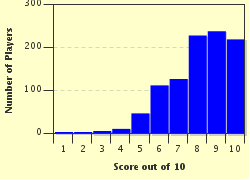Quiz Answer Key and Fun Facts
1. My starting city is near the middle of a roughly hexagonal country. Its most famous landmark is built of steel and was completed in the late 19th century. You might get a baguette here. We are starting right in front of a famous arch - but where on Earth?
2. Let's hit the road and drive in a mostly southerly direction. 1,272 kilometers later, we arrive in a city hosting the "Golden Triangle of Art", composed of the Prado, the Thyssen Bornemisza Museum and the Reina Sofia Museum. Where on Earth are we now?
3. Back in the car, heading northeast, we drive a 1,356 kilometer route that, in the middle, leads along the sea and finishes in a rather mountainous region, in a city well-known for being the seat of many international organizations, among them the Red Cross. Where on Earth are we now?
4. How about a short stage? Our next destination is only 594 kilometers away, a bit north of due east. You can find, among many other things, a world famous beer hall (and, if you arrive at the right time, a beer festival) here. Two of its most famous squares are called "Stachus" and "Marienplatz". Where on Earth are we now?
5. Ready for a longer drive? We'll head southeast and work our way along 1,942 kilometers of roadway until arriving at a city that has, historically, been known by at least three different names. Two busy road bridges span an important strait. Where on Earth are we now?
6. Now we're ready to tackle the what is likely the most dangerous stage of our journey. Driving mostly southbound for 3,165 kilometers (and finishing with a short ferry crossing), we have to take a detour to the east because the most direct route would likely be impassable. We arrive at a rather small city, a formerly important seaport, but now mostly a tourist destination and briefly in the news in early 2011 because its country's president spent his last few days in office there. You'll be able to scuba dive there, among other things. Where on Earth are we now?
7. We'll need our four-wheel drive for the next passage as we'll drive about 350 kilometers off-road in a northwestern direction before taking another brief ship passage across a famous canal and rejoining the roads and continuing for another 337 kilometers. The city we arrive at is more famous for buildings that once stood there (including a famous lighthouse) than the ones that stand there today. This city is also a major seaport on the south coast of a relatively small but important sea. Where on Earth are we now? (Hint: You can well solve this question by elimination)
8. Let's keep that four-wheel drive engaged and continue almost due south for about 1,600 kilometers, arriving in the capital of a country that has, in 2011, seen its southern part become independent after a peaceful referendum. I must admit that the country is rather poor, but where on Earth are we now?
9. Back on the roads and let's head west for a really long stage - 3,696 kilometers to be exact! We'd better pack some extra water to cross the desert before arriving in another capital city. It's a "planned city" - custom-built to act as its nation's capital. The building process was begun in the 1970s and the city officially became capital in 1991. Where on Earth are we?
10. Final stage, and further west we drive for 3,476 kilometers arriving at what was for a long time the destination city of our famous annual race - a race that was named after this city and is still being run under that name, but nowhere near its former starting or destination cities. We can see colorful bazaars and a grand mosque here, but where on Earth have we arrived?
Source: Author
WesleyCrusher
This quiz was reviewed by FunTrivia editor
Tizzabelle before going online.
Any errors found in FunTrivia content are routinely corrected through our feedback system.

